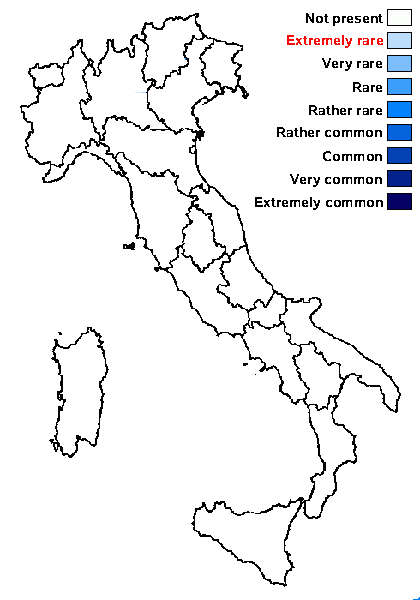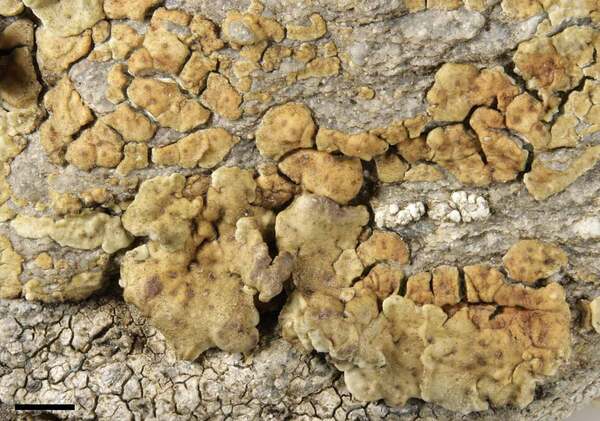Myriospora tangerina (M. Westb. & Wedin) K. Knudsen & Arcadia
in Arcadia & Knudsen, Opuscula Philolichenum, 11: 23, 2012 . Basionym: Silobia tangerina M. Westb. & Wedin - in Westberg & al., Lichenologist, 43: 22, 2010
Synonyms:
Distribution:
Description: Thallus crustose, episubstratic, areolate to areolate-subsquamulose, the areoles dispersed or contiguous through vegetative division, rounded to very irregular in outline, the margin not raised; fertile areoles (0.65-)1.1-2.6 (-5.8) mm wide, pale rusty red to bright orange, often paler towards the margin (brown areoles may frequently occur as well), often uneven and strongly convex, dull to somewhat shiny, sometimes with concentric ridges. Epicortex thin or absent; cortex paraplectenchymatous, of isodiametric cells, usually with small orange crystals; algal layer interrupted by thick anticlinal bundles of medullary hyphae; lower cortex absent. Apothecia cryptolecanorine, (0.07-)0.1-0.25(-0.4) mm across, (1-)2-10 (rarely more) per areole, immersed, with a rounded, brown to brown-black, epruinose, smooth to very uneven, sometimes umbonate disc, and a poorly evident thalline margin. Proper exciple colourless; epithecium yellow brown to golden red; hymenium colourless, 180-250 μm high; paraphyses sparingly branched and anastomosing, 0.8-1 μm thick, the apical cells more or less cylindrical; hypothecium colourless to greyish, densely inspersed with oil droplets. Asci 100-200-spored, clavate, the apical dome K/I-. Ascospores 1-celled, hyaline, narrowly ellipsoid to bacilliform, 3-4 x 1-1.5 μm. Photobiont chlorococcoid. Spot tests: thallus K-, C-, KC-, P-, UV-. Chemistry: without lichen substances.Note: a species of copper-rich rocks, described from Sweden and also known from the British isles, Norway, the Czech Republic and Russia (Novaya Zemlja), with a distinctly northern distribution in Scandinavia, also known from a single record at the base of the Western Alps (France); to be looked for in Italy.
Growth form: Crustose
Substrata: rocks
Photobiont: green algae other than Trentepohlia
Reproductive strategy: mainly sexual

Predictive model
Growth form: Crustose
Substrata: rocks
Photobiont: green algae other than Trentepohlia
Reproductive strategy: mainly sexual

Predictive model
 Index Fungorum
Index Fungorum
 GBIF
GBIF


